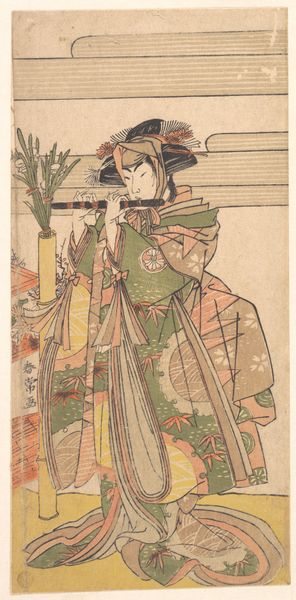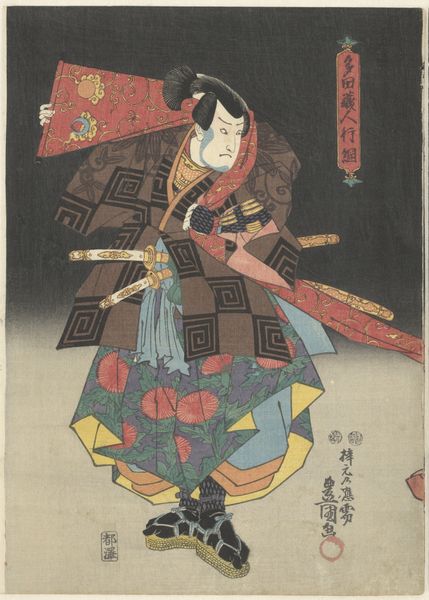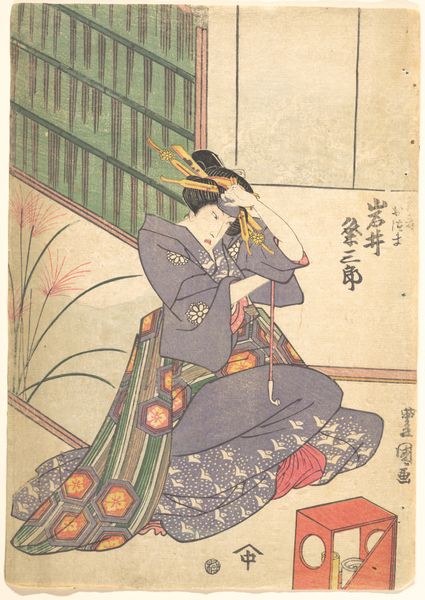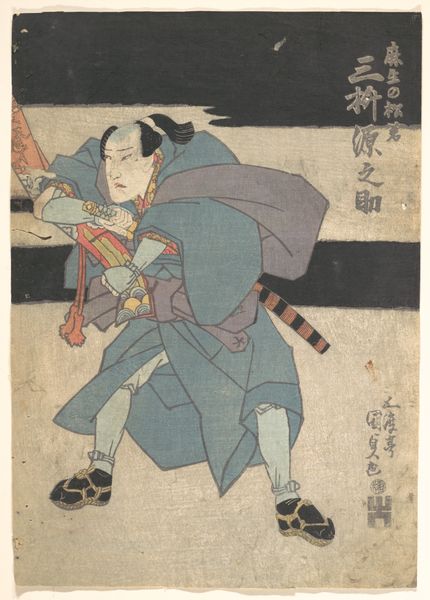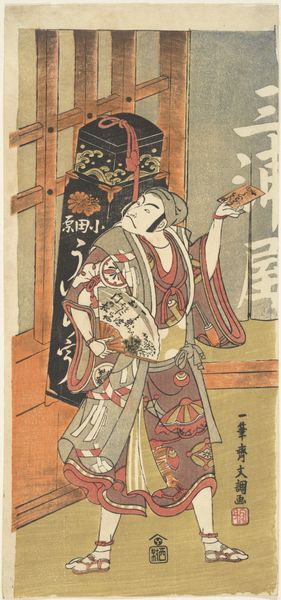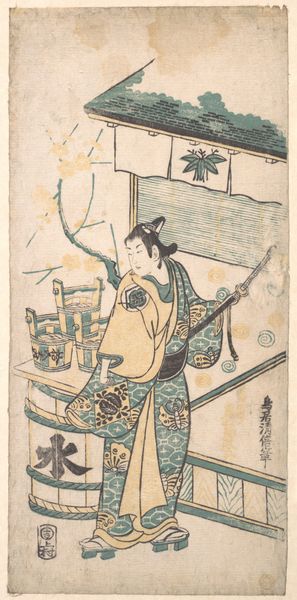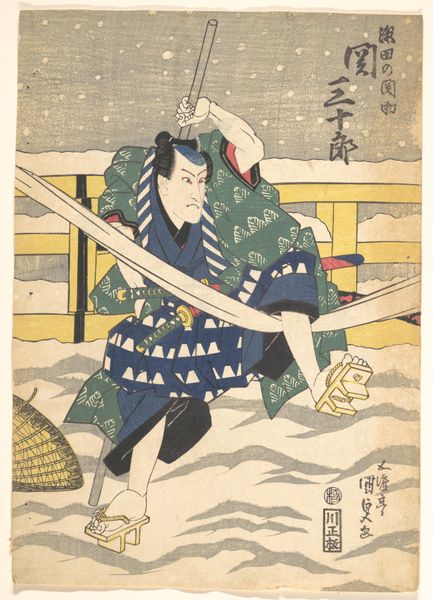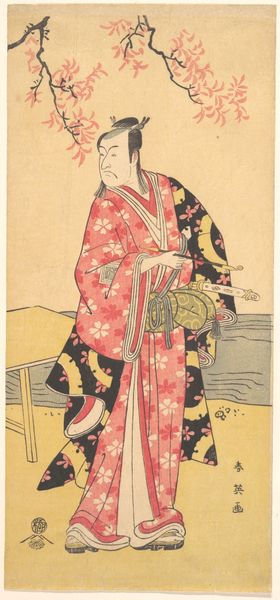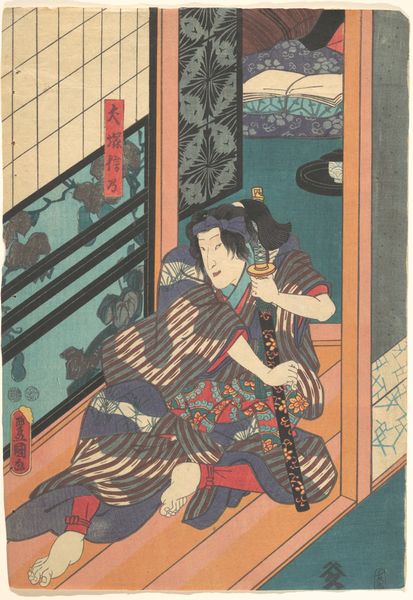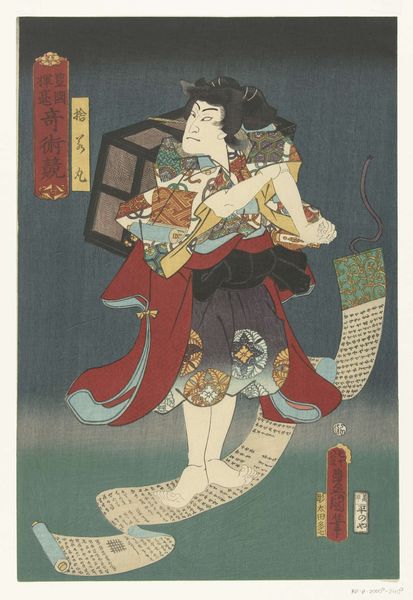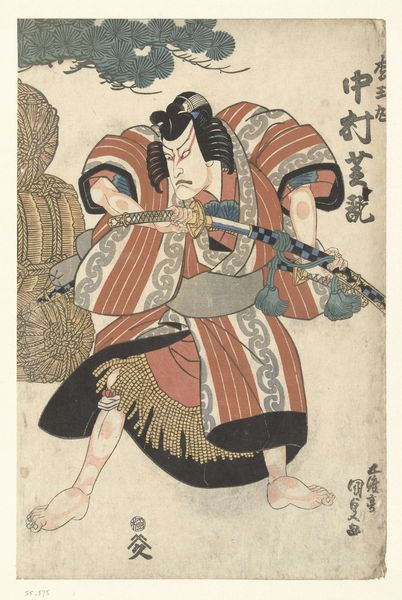
#
portrait
# print
#
asian-art
#
ukiyo-e
#
figuration
Dimensions: height 309 mm, width 185 mm
Copyright: Rijks Museum: Open Domain
Curator: This print, created around 1828 by Utagawa Kunisada, is called "Man bij de ingang van een tempel," or "Man at the Entrance of a Temple." The Rijksmuseum holds it now. Editor: The severe angle, combined with that glowering face... I immediately feel a sense of impending drama, of someone guarding a secret or perhaps planning retribution. Curator: Indeed. Kunisada masterfully plays with lines and form here. The strong verticals of the temple gate clash with the angled tiles under the figure’s weight, creating a palpable tension through pure composition. Note how the patterning in the robes offers contrasting planes as well. Editor: The maple leaf motif on the robe feels important. In Japanese iconography, maple leaves often represent the autumn season and, sometimes, loneliness or reflection. He could be in a moment of somber contemplation before decisive action. Curator: Intriguing! I'm particularly struck by how the limited color palette contributes to the emotional impact. The juxtaposition of dark green, muted red, and stark white outlines isolates the figure from the surroundings, creating a powerful study in solitude, perhaps. Editor: Yes, and those intense eyes! They suggest a story—a tale perhaps rooted in loyalty, honor, or perhaps even a tragic love. Is this an actor portraying a famous character? Or a figment of the artist's imaginings? The symbolic context and its depth would completely change this work. Curator: I think we both can agree on the tension between the formal structure and thematic ambiguity makes for a dynamic tension within the pictorial frame. It presents the image not merely as an artistic rendition, but also as a sophisticated psychological portrait. Editor: It does invite deeper reflection on both personal feelings, as well as what is not shown within the work’s setting.
Comments
No comments
Be the first to comment and join the conversation on the ultimate creative platform.
